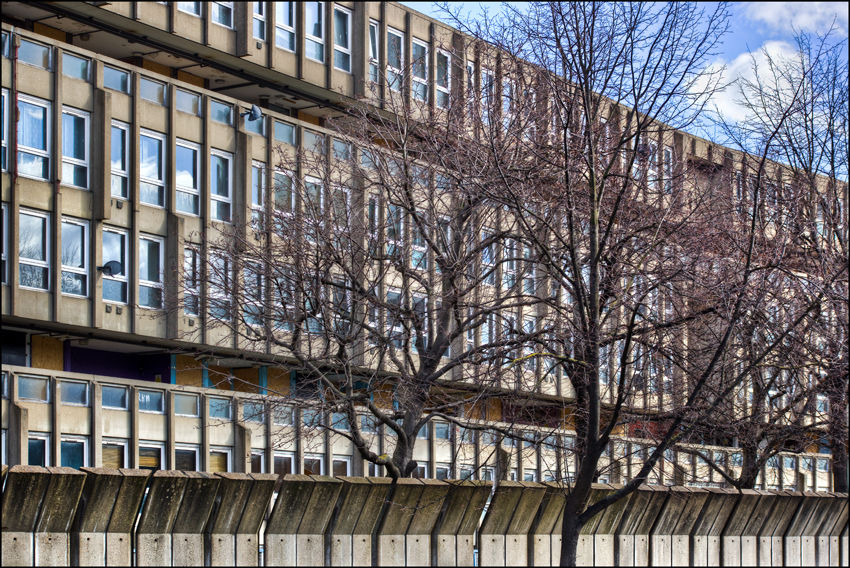Robin Hood Gardens was a residential estate in Poplar, London, designed in the late 1960s by architects Alison and Peter Smithson and completed in 1972. It was built as a council housing estate with homes spread across 'streets in the sky': social housing characterised by broad aerial walkways in long concrete blocks, much like the Park Hill estate in Sheffield; it was informed by, and a reaction against, Le Corbusier's Unité d'Habitation. The estate was built by the Greater London Council, but subsequently the London Borough of Tower Hamlets became the landlord.
The scheme, the first major housing scheme built by the Smithsons, consisted of two blocks, one of 10 and one of seven storeys; it embodied ideas first published in their failed attempt to win the contract to build the Golden Lane Estate.
Now demolished.
The announcement in 2008 of the intent to demolish Robin Hood Gardens prompted one of the largest ever campaigns in architectural preservation, initiated by the Twentieth Century Society and Building Design and supported by an international array of architects, including Richard Rogers and Zaha Hadid, as well as leading architectural historians. In 2015, the application to give Robin Hood Gardens listed status was turned down and demolition was approved. The site is now under development to replace the 252 flats with over 1,500 new homes.
























Comments